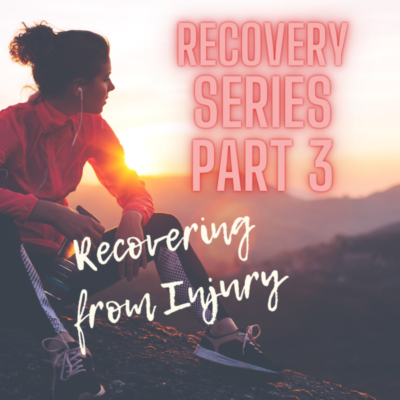This is Part 3 in Palmer Shape’s Recovery Series.
When you’re an active person, and the dreaded realization sets in that you’ve suffered from an injury of some sort–what do you do, and what are the most effective ways to begin the recovery process?
For any kind of injury, whether it’s a soft-tissue or structural injury, the first thing you should consider doing is to see a professional. Don’t try and be a search engine master or ask social media to self-diagnose. Professionals spend years getting educated on how to assess, rehab, and fix injuries. Let them help you!
But, what can you do if you can’t get an appointment, can’t pay out of pocket, or don’t have insurance? While the following is NOT medical advice, a substitute for medical advice, or a diagnosis, here are some general guidelines that you may wish to consider in the immediate aftermath of an injury to get a jumpstart on recovery.
FOLLOWING IMMEDIATE INJURY:
When dealing with most soft tissue injuries, the first 48 hours often begin with an inflammatory phase. This occurs when your body recognizes enough damage, and it swells up to stop you from moving the area while the body handles repair. It’s beneficial to let your body do its thing during this time and follow the standard RICE protocol (Rest, Ice, Compression, Elevation). Stick to cryo-therapy remedies (ice bag, ice bath, cryo-chamber) if possible.
When the time is right, and hopefully you sought out advice from a professional that can help pinpoint the right time, then an athlete can begin to start gentle movement in attempts to increase Range Of Motion (“ROM”). However, keep in mind that micro-tears in tissue that are in the repair process will slow the progression towards return to full use. At this point, heating therapies will be a useful aid for increasing ROM (heating pad, hot tub, salt bath etc).
You also want to avoid hitting that “bad note.” Imagine damaged tissue as an out of tune guitar string, but that will re-tune itself over time as it repairs. You want to play songs that don’t include that particular string until its back in tune. The reason being that if you pluck that string before its repaired and you hear that “bad note”, you’ll know it as soon as you hear/feel it. If this occurs, the safest bet will be to start that 48-hour inflammatory phase all over again.
If you want to avoid hitting that “bad note”, open your recovery repertoire to include contrast therapy (alternating ice and heat), electric stim, ultrasound, etc. You should have a smoother and quicker transition into full recovery.
RECOVERY AFTER INJURY:
Always know what you’re dealing with, and make a plan for it to get better. You’ve likely been injured before. Most of the time it’s not permanent and normally not as bad as it started out. Don’t return with crutches (not just literally, but also figuratively).
If you’re doing too much modifying to avoid pain or discomfort, you most likely are rushing the process. The ultimate goal in recovery after an injury is full unmodified progression. This is a great hint that you’re following a reasonable return to full activity. If at any point something hurts, reassess with your medical team and rework your recovery protocol.
BEFORE AND AFTER ACTIVITY:
We have touched base on this before, but one should not underestimate the effectiveness of a full warm-up, cool down, and the busy work (rotational, static and dynamic movements) that keep the recovery process in motion after an injury. This allows you to continue to move in the right direction of full recovery while you continue training.
Other methods that can help for before and after activities are prep work with KT tape, heating pads, hot tub, electric stim, ultrasound, foam rolling, etc.
Recovery work can also include ice bags, ice bath, cryo-chamber, salt bath, GENTLE static stretching, GENTLE massage, etc.
Last, keep in mind that following an injury, you need to do what feels good. Listen to what your body tells you it needs and can handle. Following fatigue, do what you know your body needs even though it may be uncomfortable and undesirable: it is necessary.
Drop your thoughts below and let me know: have you rushed your recovery before? Did it cause a setback in your overall recovery time?
OTHER ARTICLES IN THE SERIES:
RECOVERY SERIES PART 1: MAKE YOUR RECOVERY DAY WORK FOR YOU
RECOVERY SERIES PART 2: DAMAGE, REPAIR, REMODELING
About the Author:
Palmer Shape holds a B.S. in Physiology and is a Certified Strength and Conditioning Specialist designation (CSCS). He’s equipped with over a decade of competition experience, having coached and trained hundreds of high school, college, and professional athletes, including obstacle course racers. A hurdler by nature, he is no stranger to overcoming obstacles quickly and efficiently. His passion, combined with scientific knowledge and data, have helped hundreds of athletes take their training to the next level, often reaching podium spots or winning coveted titles.
Follow him on Instagram at @Palmer_Shape


